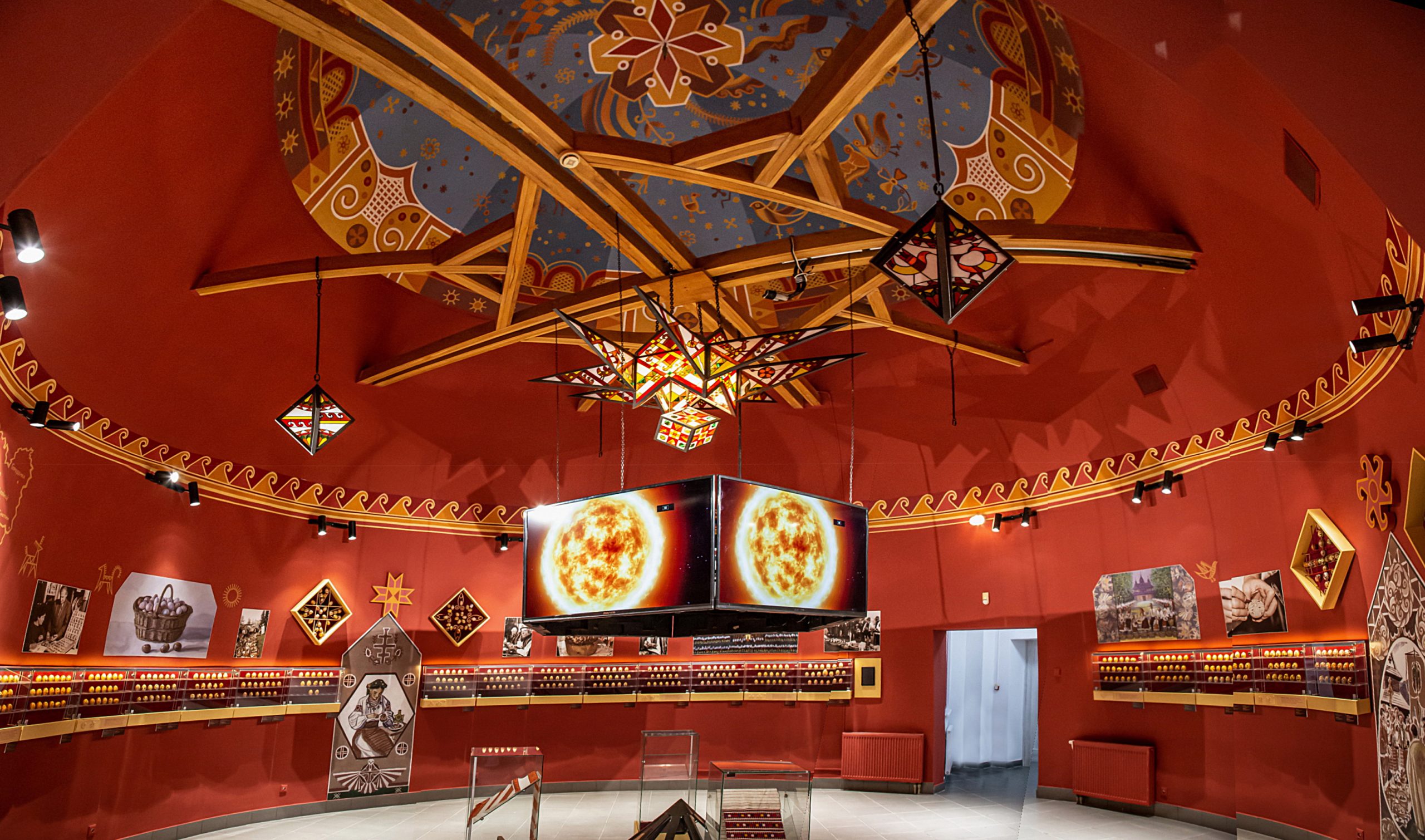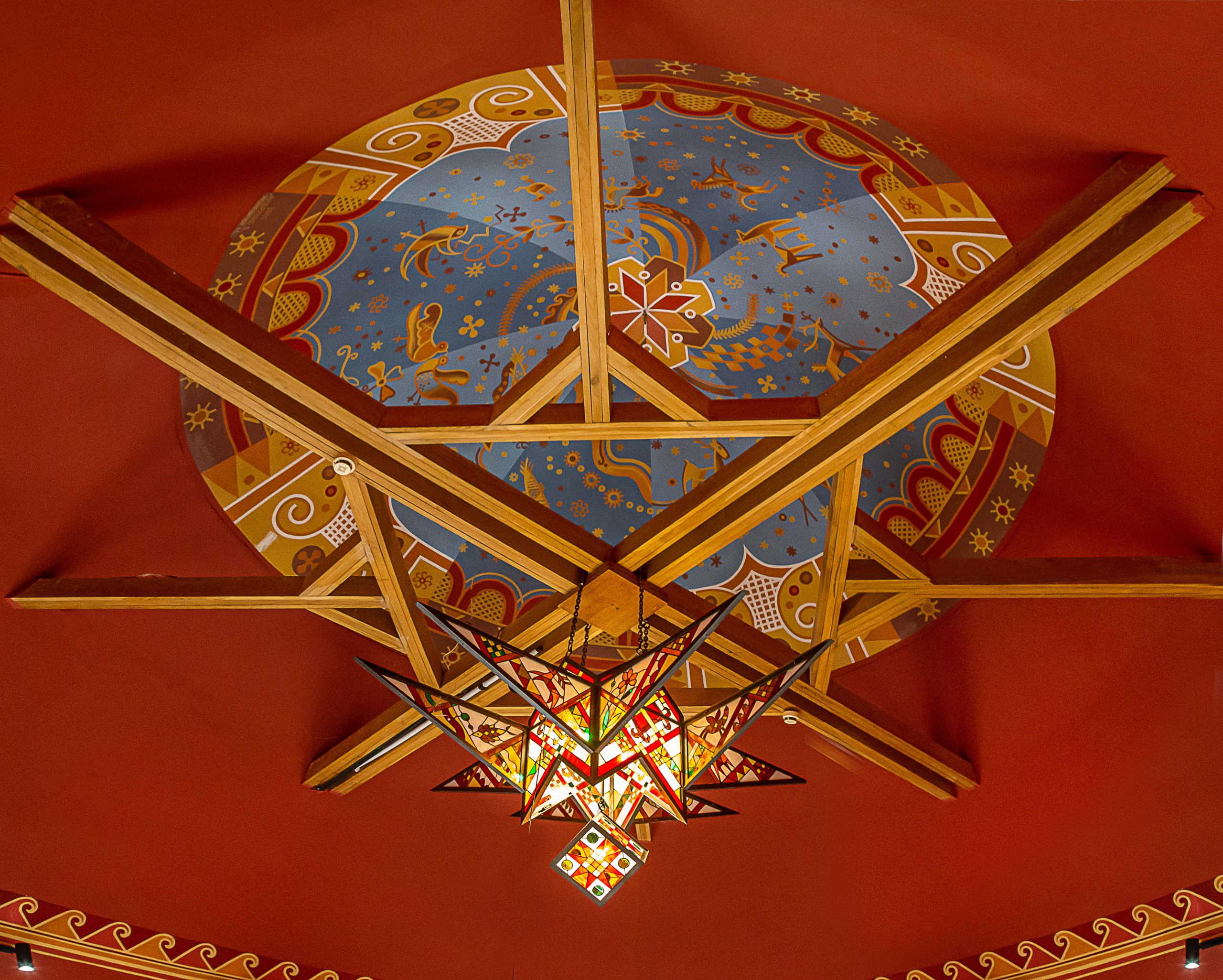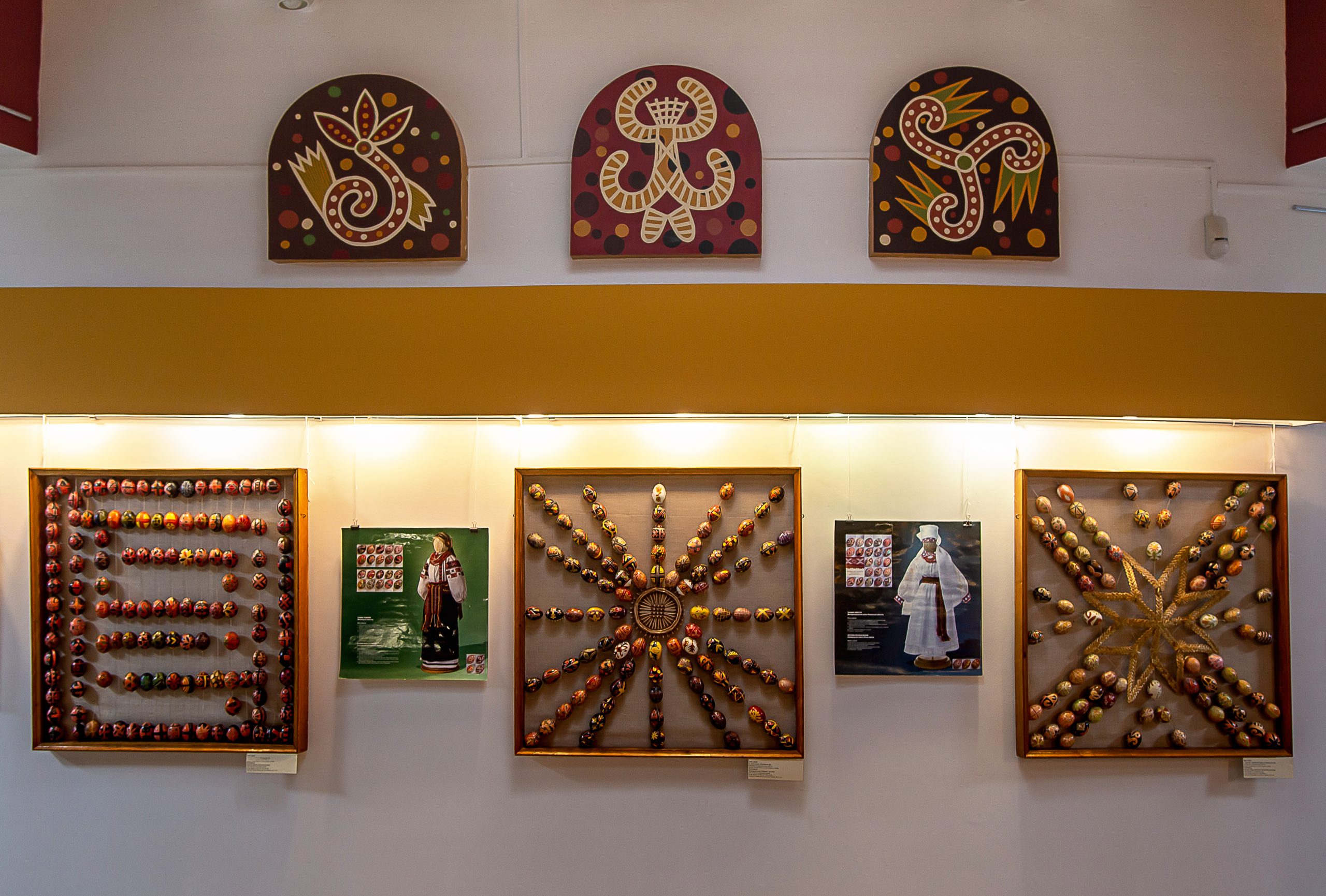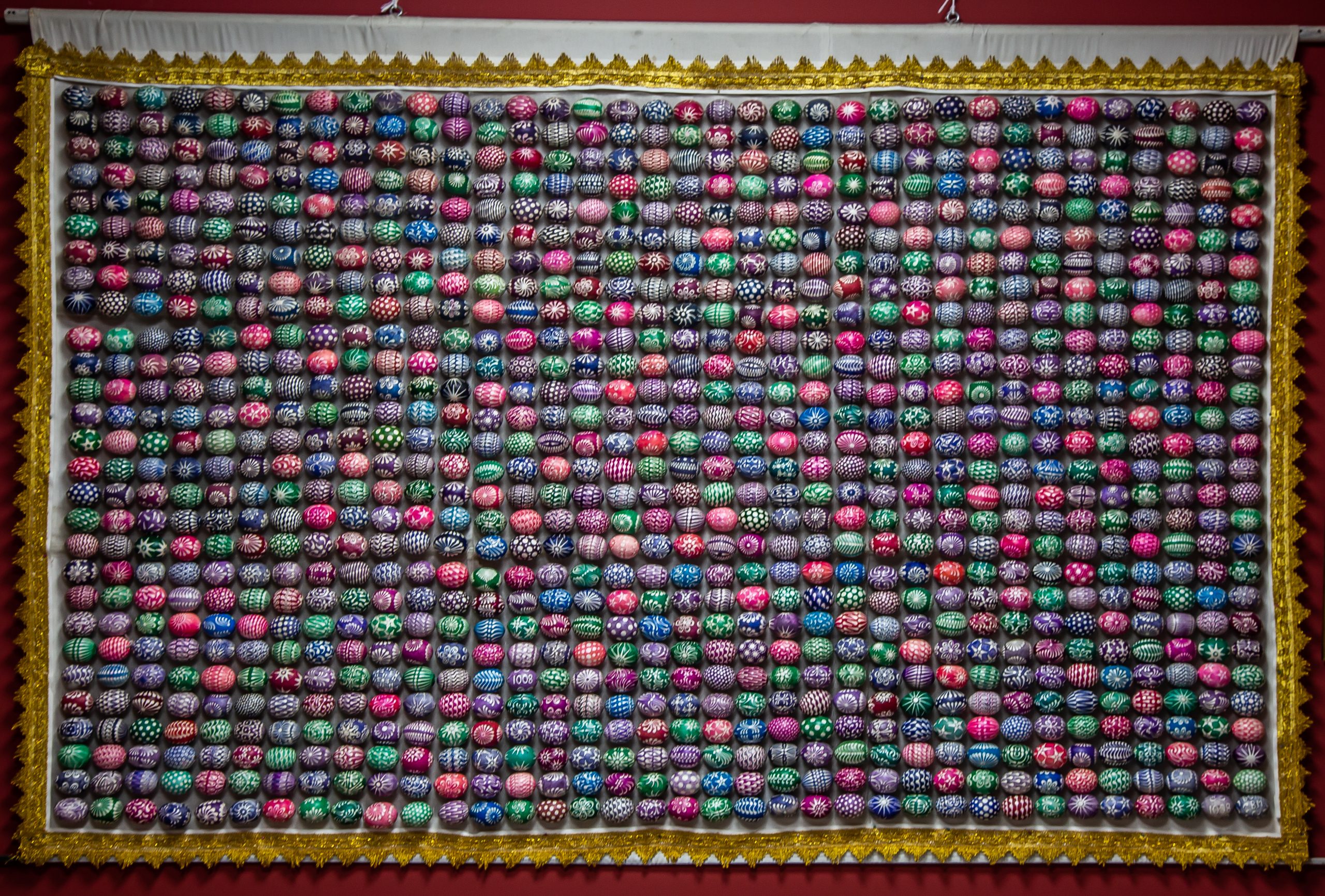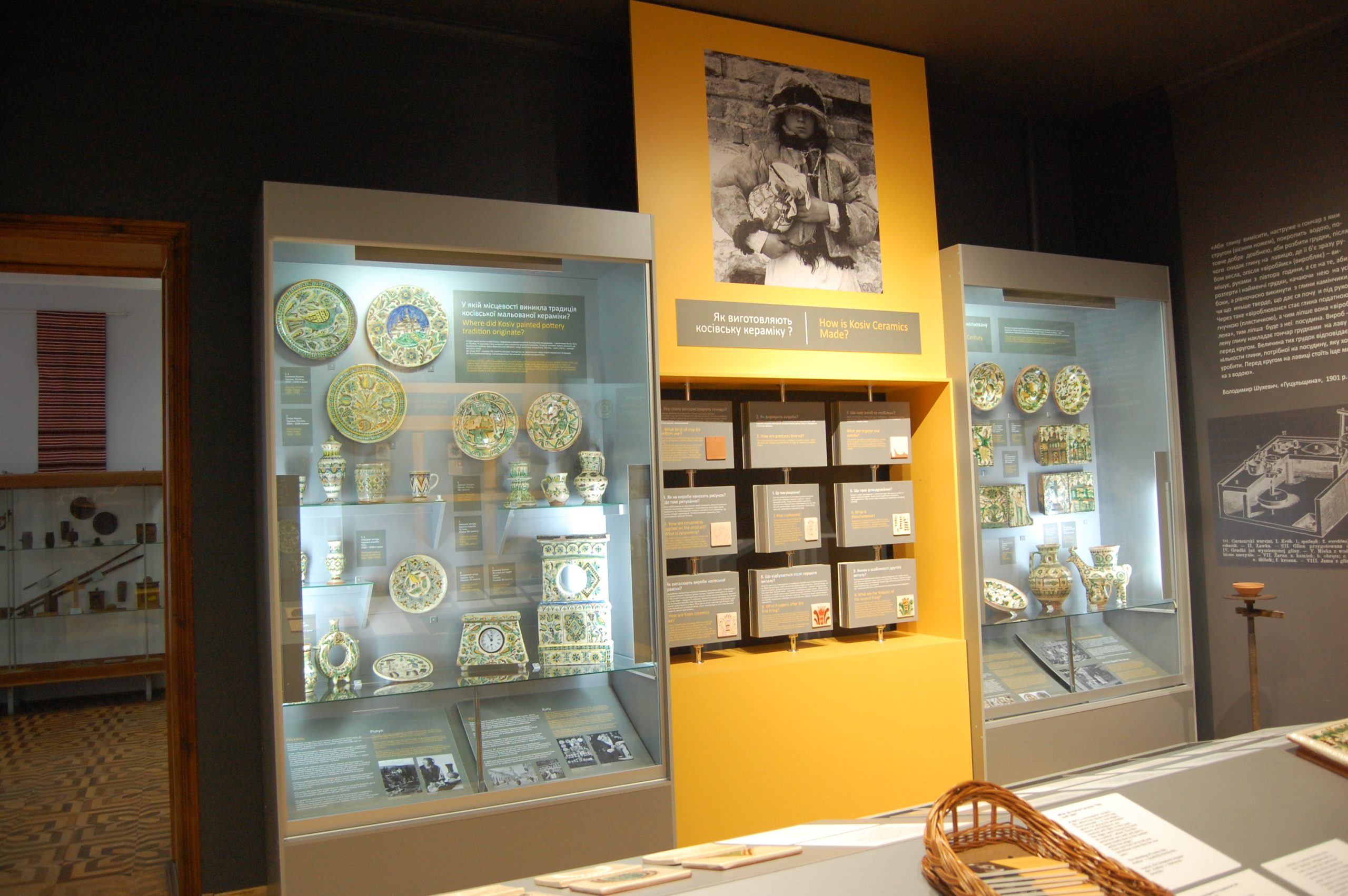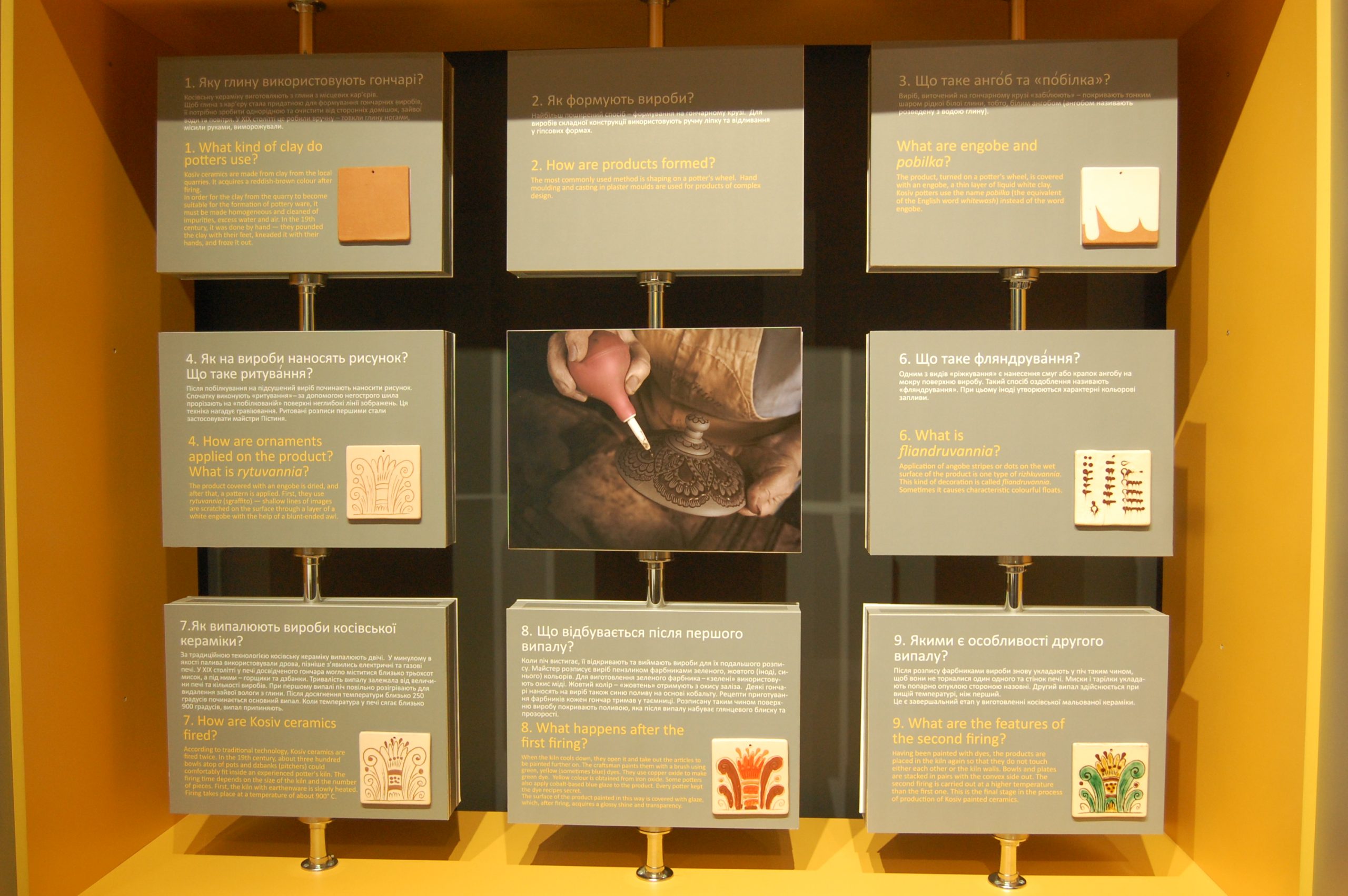Yosaphat Kobrynskyi National Museum of Hutsulshchyna and Pokuttia Folk Art.
Address: 25 Teatralna Street, Kolomyia, Ivano-Frankivsk region, Ukraine
Phone: +380343327978
Email: info@hutsul.museum
Website: https://hutsul.museum
Social networks: https://www.facebook.com/hutsul.museum
Tickets: https://tickets.hutsul.museum/
Over its almost century-long history, the Kobrynsky National Museum of Folk Art of Hutsulshchyna and Pokuttia has become a significant cultural institution for research, preservation and promotion of folk culture and artistic heritage of the Carpathian region.
It was founded in 1926 on the initiative of Volodymyr Kobrynskyi as the first Ukrainian Folk Museum in Galicia. It is located in the former People’s House, built at the expense of the Ukrainian community of the city (1895-1902) with the active participation of the Greek Catholic priest, parish priest from the village of Myshyn, Josaphat Kobrynskyi. The museum was opened to the public on 31 December 1934.
The museum’s collection includes about 50,000 items dating from the 17th to the 21st centuries. However, some exhibits date back to the 4th millennium BC and represent the agricultural culture known in archaeological and historical science as Trypillian. The museum collection is the largest and most complete collection of Hutsul folk art in the world and annually attracts 300,000 visitors from over 70 countries.
All types of traditional folk art of Hutsuls and Pokutians are presented in 18 exhibition halls: artistic woodworking, metal and leather processing, pottery, decorative weaving, carpet weaving, embroidery, clothing and jewellery. In addition to traditional folk culture, the museum has a permanent exhibition of sacred and fine art, a department of traditional Carpathian furniture, and a recreation of the exterior of a Hutsul dwelling and the courtyard of a hut-grazhda. The museum exposition is completed by a recreated memorial room of the famous public and political figure, writer Andriy Tchaikovsky, whose political and literary heritage was banned in Soviet times.
The museum was granted national status in 2009 by a Presidential Decree for the uniqueness of the collections collected and preserved under totalitarian regimes and international recognition.
The National Museum has four branches: The Museum of Easter Egg Painting, the Kosiv Museum of Hutsul Folk Art and Life, the Yaremche Museum of Ethnography and Ecology of the Carpathian Region, and the Shukhevych Family Museum-Estate in the village of Tyshkivtsi, Horodenka District.
Branch: Easter Egg Museum (Pysanka).
Address: 43b Chornovola Street, Kolomyia, Ivano-Frankivsk region, Ukraine
Phone: +380343347513
Email: pysanka@hutsul.museum
Website: https://pysanka.museum
Social networks: https://www.facebook.com/profile.php?id=100069078320931
The world’s only Museum of Easter Egg Painting, a branch of the Y. Kobrynskyi National Museum of Folk Art of Hutsulshchyna and Pokuttia, was opened on 24 October 1987 in the premises of the Church of the Annunciation, an architectural monument of the late sixteenth century (1587). In 2000, an original building in the shape of a pysanka egg over 13 metres high was built especially for the museum, and the Pysanka Museum itself became a visiting card of the city and the region, visited annually by about one hundred thousand tourists from Ukraine and more than 70 countries. Tourists are attracted by both the original building and the opportunity to see a variety of original miniature masterpieces. The museum’s exposition includes about three thousand unique exhibits: pysankas, malyovankas, driapankas created on chicken, goose, ostrich or quail shells, as well as decorative eggs decorated with various techniques. In total, the museum’s collection includes more than 12,000 pieces. A significant part of the collection belongs to Easter eggs from the Hutsul and Pokuttia regions, where the ancient tradition of Easter egg making was uninterrupted and on the basis of which the museum’s collection was formed. It is therefore symbolic that the renewal and modernisation of the exhibition began with the hall where they are presented. Thanks to the project supported by the Ukrainian Cultural Foundation, the exhibition equipment and lighting were completely renewed, a video installation and three-dimensional stained-glass compositions were created, which enhance the emotional perception of the exhibition, making it more accessible to people with visual and hearing impairments and generally more interesting for visitors of all ages. The collection includes Easter eggs from all historical and ethnographic regions of Ukraine and more than thirty countries of the world where Ukrainians have spread Easter egg art or preserved local traditions of decorating eggs as a symbol of the birth of the world and life. Decorative eggs made of semi-precious stones or decorated with various techniques come from India, Turkey, China, Israel, gilded eggs from Egypt, silver pysanky coins from Canada, pysanky, malyovanky, driapanky, decorative eggs from Poland, Romania, Slovakia, Croatia, Hungary, Czech Republic, Germany, France…
The oldest not only in our collection, but also in Ukraine is a 500-year-old Easter egg painted with natural dyes on a goose egg, which was found in Lviv during archaeological excavations. The Museum of Easter Egg Painting is a nominee of the All-Ukrainian campaign “7 Wonders of Ukraine” (ranked 8th), was awarded for its high tourist rating by the world’s most famous travel website TRIPADVISOR, and was recognised at the state level as a tourist “magnet” of Prykarpattia. In 2018, the element “Tradition of Hutsul Easter eggs” was included in the National List of Elements of Intangible Cultural Heritage of Ukraine, which was submitted by the Museum of Easter Egg Painting to the Expert Council of the Ministry of Culture of Ukraine. Throughout the year, the museum hosts masterclasses in Easter egg painting and other art forms, which can be attended by prior arrangement, and exhibitions of various genres. The Museum of Easter Egg Painting gave impetus to the launch of the annual All-Ukrainian Folklore Festival “Pysanka” in Kolomyia, which usually takes place on Palm Sunday and brings together Easter egg painters, folk art researchers, and artists from all over Ukraine and many countries of the world for two days.
Branch: Kosiv Museum of Folk Art and Rural Life of Hutsul Region.
Address: 55 Nezalezhnosti Street, Kosiv, Ivano-Frankivsk region, Ukraine
Phone: +380347821643, +380968469984
Email: kosivmuzeum@gmail.com
Social networks: https://www.facebook.com/kosivmuseum
The museum is located in the city centre, on Independence Square. The building is known locally as the Rabbi’s Wall. Before the Second World War, it belonged to the Jewish community and served as a residence for a rabbi. The building attracts attention with its classical architectural forms and is a monument of architecture and urban planning of the late nineteenth century.
The museum collection includes about 6 thousand items. It was based on the once well-known collection of Hutsul artworks of the couple Yevhen and Zoia Sahaidachnyi, who settled in Kosiv after the Second World War. Yevhen Sahaidachnyi was a Ukrainian artist, theatre decorator, sculptor, teacher, ethnographer and collector.
A visit to the museum begins with a tour of the exhibition halls, where exhibitions of contemporary art change every month. Painters, graphic artists, sculptors, photographers, designers, collectors and masters of decorative art from different parts of Ukraine present their works here.
The permanent exhibition of the Kosiv Museum of Hutsulshchyna features more than 700 unique exhibits. They are housed in four spacious themed halls: “Hutsul costumes and life”, “Ceramics”, “Artistic woodworking” and “Textiles”. Most of the exhibits date back to the nineteenth and first half of the twentieth century. The pearls of the collection are the works of the coryphaei of Hutsul folk art: Oleksa Bakhmatyuk, Yurii Shkribliak, Vasyl Devdiuk and many others. Acquaintance with the museum artefacts reveals the historical value and continuity of the traditions of Hutsul folk crafts that exist in Kosiv district to this day.
The highlight of the museum is a unique interactive exhibition dedicated to the history of Kosiv painted ceramics. Visitors can actively interact with its elements: explore, touch, watch videos, look into drawers and caskets, and perform various game tasks. The hall is equipped with designer showcases for ceramic artefacts from the museum’s collection. Original products by Oleksa Bakhmatyuk, Pavlyna Tsvilyk and other famous potters are displayed alongside historical photographs and interesting texts.
Another innovation of the exhibition is its accessibility for blind visitors. This is the only permanent exhibition of ceramics in Ukraine that is partially adapted for the visually impaired.
Today, the Kosiv Museum of Hutsulshchyna is one of the most popular cultural leisure centres in the area: museum staff regularly organise exhibitions, art events, masterclasses, interactive children’s activities and quests. For fifty years in a row, the institution has been bringing together masters of folk art, enthusiastic ethnographers and connoisseurs of Hutsul history and culture.
Branch: Yaremche Museum of Ethnography and Ecology of Carpathian Region.
Address: 269 Svobody Street, Yaremche, Ivano-Frankivsk region, Ukraine
Phone: +380343422208, +380984407644
Email: yar.museum@gmail.com
Social networks: https://www.facebook.com/profile.php?id=100076014465497
In a picturesque part of the Carpathians, not far from the foot of Hoverla, where the waters of the fast-flowing Prut are born, there is a beautiful town of Yaremche. Today, it is one of the largest tourist centres with a number of hotels, holiday homes, entertainment complexes and art fairs. This was facilitated by scientific research of the region, which has been gaining more and more publicity since the second half of the nineteenth century. Industrial and ethnographic exhibitions played an important role in popularising the region, one of the first of which was the economic and industrial exhibition in Kolomyia in 1880. Here, for the first time, the folk artists of the region presented their works: carver Andrii Tymchuk from Dora, embroiderers Yevdokiia Orfeniuk from Mykulychyn and Hanna Mysiuk from Yamna, and women’s beaded jewellery by Mariia Filiak from Mykulychyn. Subsequently, in the twentieth century, the works of Hutsul masters were presented at the exhibition of books and press held in Vorokhta in 1938. This popularisation of traditional Hutsul culture was the impetus for the formation of Hilovskyi’s private collection in Yaremche, which included more than 700 pieces of art and household items of the Hutsuls. Thus, in the 1930s, the first museum was founded in Yaremche, and in the early 1960s, the creation of the local history museum began, which opened in 1963.
The purpose of this museum is to demonstrate the traditional life support system of the Carpathian ethnic group in the natural and socio-cultural conditions of their habitat, the use of the natural environment by the ethnic group, the traditions of rational nature management, the patterns of formation and functioning of ethno- and ecosystems, and the presentation of all types of traditional folk art of the inhabitants of the Carpathian region.
In recent years, the Yaremche Museum has become a cultural and artistic centre for the community and guests of the city, where all talented artists, both domestic and foreign, can receive residencies, where everyone can share their art and find like-minded people.












